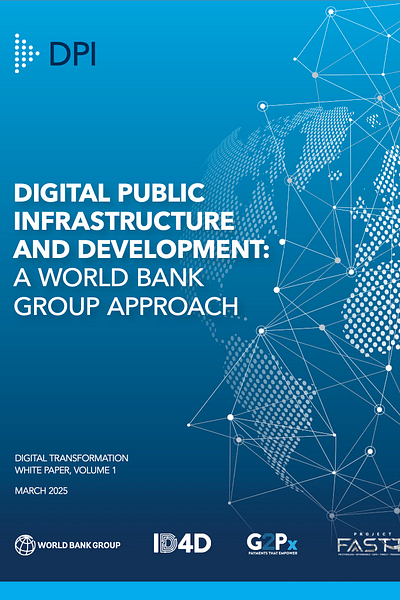(Part 2 of 2): DPI: Transforming Lives, Not Just Payments
Digital Public Infrastructure's foundational principle is "inclusion first."
This is my daily post. I write daily but send my newsletter to your email only on Sundays. Go HERE to see my past newsletters.
HAND-CURATED FOR YOU
The World Bank loves digital public infrastructure (DPI) and sees it as a means for rapidly developing and deploying trusted, inclusive digital services that can catalyze innovation and accelerate a country’s digital transformation journey.
That’s a big statement, and while the most well-known examples of DPI are the UPI and PIX payment systems in India and Brazil, its use goes far beyond payments.
This is the second installment of a two-part story. Part one (HERE) explores India’s use of DPI and draws fascinating comparisons with Brazil’s PIX and Alipay.
But what exactly qualifies as DPI? The World Bank offers the shortest definition yet: “Digital public infrastructure refers to systems that serve as foundational, digital building blocks for public benefit.”
The brevity of this definition is impressive, but each word is embedded with meaning:
Foundational: DPis provide essential digital functions or resources at the society scale, are not limited to a particular sector or population, and are widely adopted by government, firms, and individuals.
Building Blocks: A building block design enables DPls to be adopted and reused across institutions, applications, sectors, and borders, requiring them to be open and interoperable.
For the Public Benefit: DPl is a developmental approach that requires embedding principles around inclusion and user centricity, privacy-by-design, and strong governance, including public oversight and accountability, to achieve the promise of safe and trusted digitalization that leaves no one behind.
The World Bank identifies DPI's core functions as identity and e-signatures, digital payments, and data sharing. These essential features are integrated into e-government applications and private-sector software that influence health, social protection, finance, agriculture, and taxation, among others.
The examples provided, particularly on digital IDs, illustrate that the need for DPI is not confined to developing countries but is also present in developed nations.
Most importantly, DPI is a versatile concept that can be realized in various ways to achieve diverse goals. Most countries will not have a single DPI framework; instead, it will be provided by different government entities such as tax, health, or agriculture.
DPI's foundational principle is “inclusion first,” and its success relies on the capacity to deliver safe and inclusive digital services that benefit all members of society.
This represents a fundamental shift in the global approach to digitalization, positioning the government to provide inclusive technology that extends beyond the profit-driven motives of large tech companies.
Governments build physical infrastructure like roads and bridges. Why shouldn’t they play a role in the digital world in building inclusive infrastructure?
👉What DPI is not: Five myths
🔹 Myth 1. All digital ID, digital payments, and data sharing platforms are DPI.
Identity, payments, and data-sharing systems all provide critical functions for digitalization. However, many existing systems today do not meet DPI’s full scope. These systems may not be interoperable or use open standards and privacy-enhancing technology.
🔹 Myth 2. DPI replaces the need for sector-specific digital data or infrastructure.
DPI is a complement to sector digitalization, not a replacement. Core sector digital systems and standards—such as digital registries for social protection, business, credit, and agriculture; health-sector interoperability and data exchange protocols; digital tax or human resource management information systems —are essential investments to be managed in the respective sector.
🔹 Myth 3. All DPIs require centralization.
In some cases, a specific DPI system is operated by a single provider (such as a digital agency that issues an official digital ID credential). However, the various layers of DPI (such as digital identity, digital payments, data sharing) often involve multiple entities, such as a national ID agency, a digital agency, a certificate authority, the central bank, and payment service providers, among others.
🔹 Myth 4. Building DPI means you must use it for everything.
The advantage of DPI is its ability to reuse the same building blocks—such as a fast payments system—for various services such as a health insurance payment, a social welfare benefit, or a person-to-person transfer. However, this does not mean that because a DPI exists, it should be integrated into all services, or that all features of a particular DPI are appropriate in all use cases.
🔹 Myth 5. DPI is the end goal or cure-all.
DPI is not a silver bullet. It is one piece of a comprehensive strategy for digital transformation, a means to the ends of scaling up impactful digital services and creating new markets that generate benefits for people, governments, and firms. Focusing too narrowly on DPI is likely to be ineffective.






